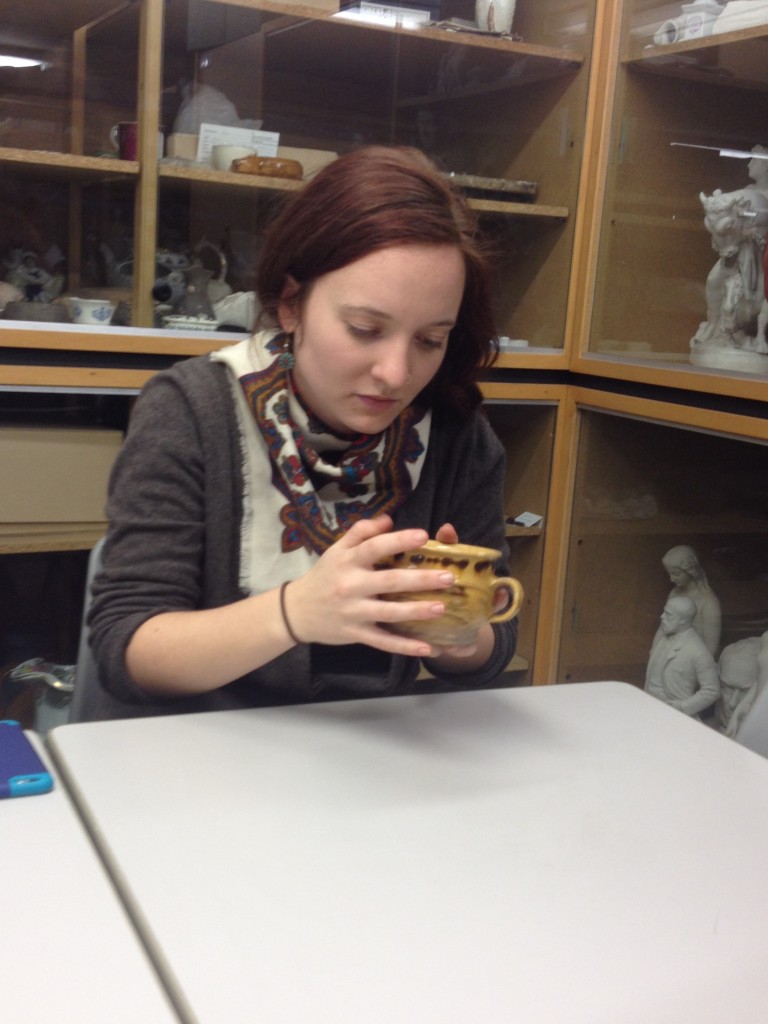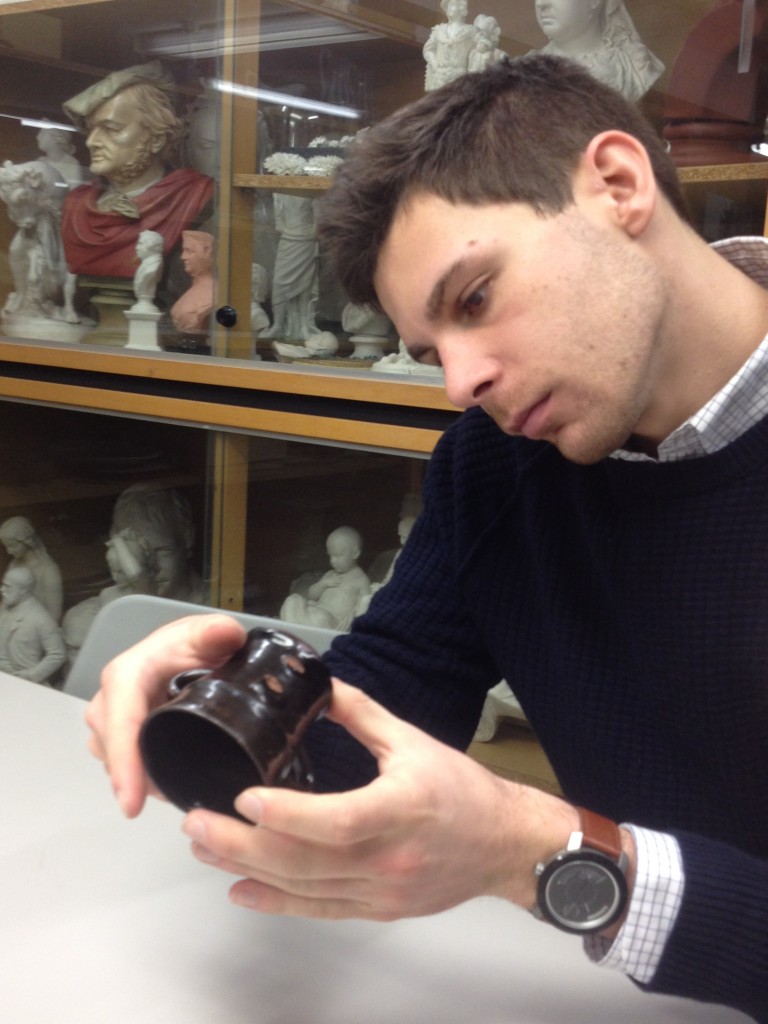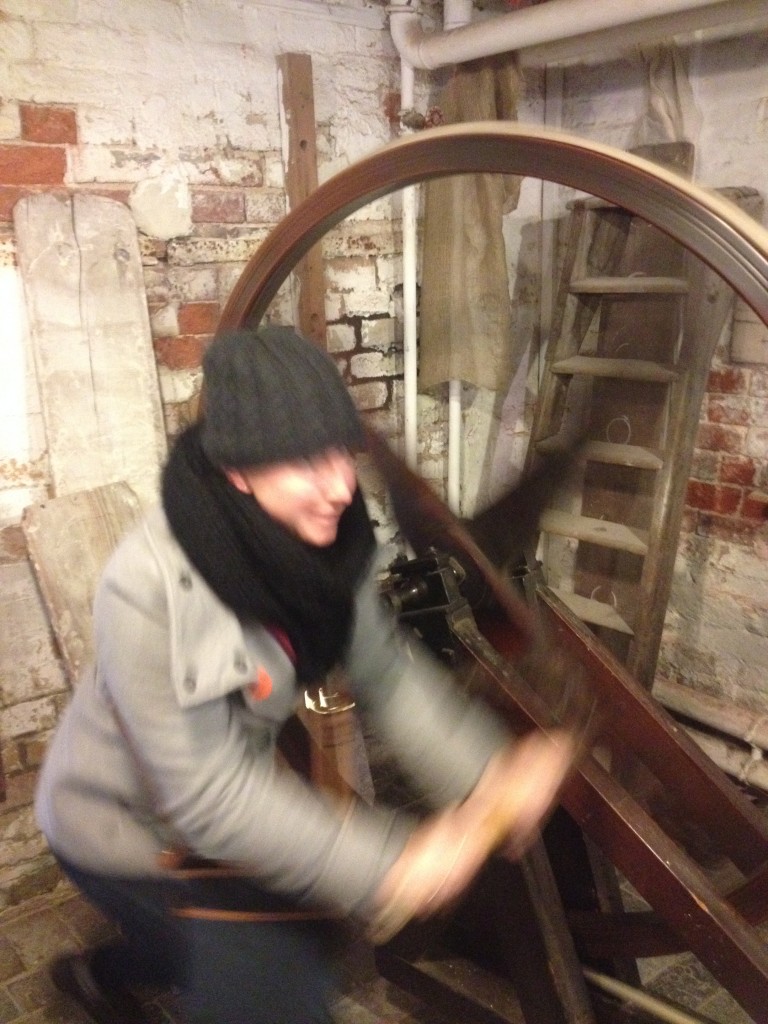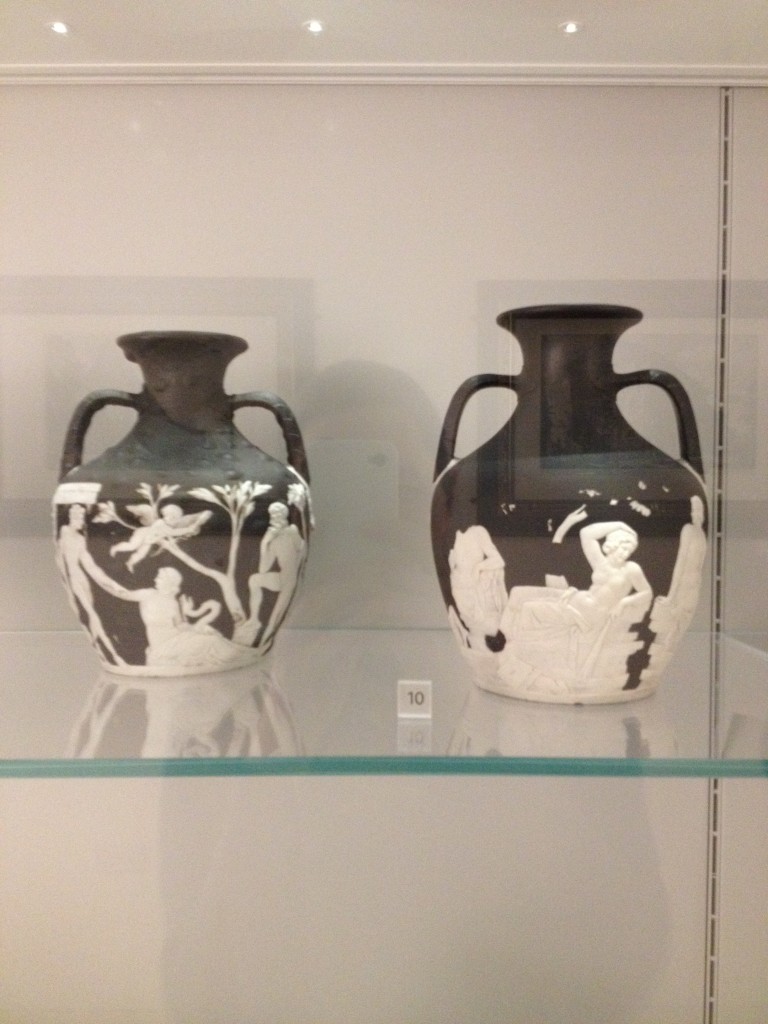England Day 7: A Day in the Potteries
Saturday morning before sunrise, we left the glitter of London for the industrial town of Stoke-on-Trent. This took us to the heart of the English pottery industry, once home to Spode, Wedgwood, and hundreds of smaller companies.
The skyline of Stoke-on-Trent. The distinctive chimneys of bottle kilns (like that in the center) once dominated the town; the two straight chimneys to the left are twentieth century versions.
Our train took us north over canals and across fields, some still showing traces of medieval agriculture. We couldn’t see it, but the land was also changing beneath the rails, to the massive clay and coal deposits around Stoke-on-Trent that nourished the pottery industry there.
Alighting at the station, we met our guide for the day, Deb Skinner, and headed for the Potteries Museum. There, under the care of Deb and curator Miranda Goodby, we got a high-speed introduction to half a millennia of Stoke pottery, outlining the industry’s transition from largely utilitarian slipwares to the highly refined table- and decorative wares associated with it today.
WPAMC students examining seventeenth century Staffordshire pieces at the Potteries Museum. Early potteries sold pieces under a system of firsts, seconds, thirds, worser thirds, and so on; the hasty craftsmanship in these two pots shows an emphasis on speed and utility over perfection.
After a lunch of traditional Staffordshire oatcakes, we arrived at the Gladstone Pottery Museum. This small pottery was typical of the anonymous firms that formed the bulk of the industry, and is preserved in almost complete working order. The museum gave us a first-hand feel for the manufacture, enlivened by former pottery workers still plying their trades and talking with visitors.
Right: Throwing pots at not-quite-production speed. This went from clay to vase in less than three minutes. Left: Powering a pottery wheel, one of many ancillary tasks that supported the potters
Our last stop was the Wedgwood Museum. Here, we saw the top end of production—rows of beautiful plates and vases. Looking at them all, we could see why the Stoke potteries had invested heavily in design education for local children. We also got to investigate the company’s wonderful archives, including pattern books and heraldry references that Wedgwood used to customize its wares.
Wedgwood’s process of innovation. Left: trays of experimental tiles used to perfect specific clays and glazes. Right: early attempts to recreate the Portland Vase
We left Stoke after dark, tired but with a deeper understanding of pottery from clay to consumer.
The remains of education, and of a wonderful day.
By Elisabeth Meier, WPAMC Class of 2017









Leave a Reply